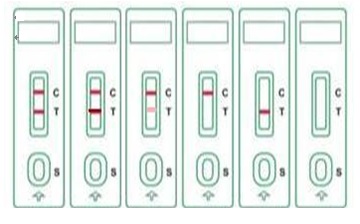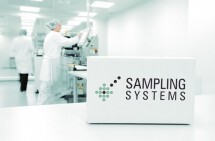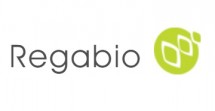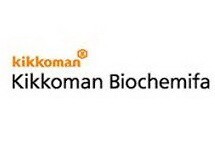แผ่นตรวจสารอะฟลาท็อกซินรวม Total Aflatoxin Test ใช้ง่าย 5-50ppb
แผ่นการ์ดตรวจทดสอบสารอะฟลาทอกซินทั้งหมด
Total Aflatoxin (B1, B2, G1 and G2) Test
แค็ตตาล็อก เลขที่ LSY-20007
1. เรื่องย่อ
ผลิตภัณฑ์นี้ใช้สำหรับการทดสอบสารตกค้างของอะฟลาทอกซินในเมล็ดพืชอาหารสัตว์และตัวอย่างพืชน้ำมันที่บริโภค เช่น ถั่วลิสง เหมาะสำหรับการทดสอบอย่างรวดเร็ว ที่หน้างาน (on site) ใช้งานง่าย มีความไวสูง
2. ขีดจำกัด ในการตรวจวัด ขึ้นกับ food matrices ที่ทดสอบ
5.0 ng/g (5.0ppb) ~ 50 ng/g (50ppb)
3. ข้อมูลจำเพาะ ขนาดบรรจุ: 25 / 50 * การทดสอบ / กล่อง*
4. หลักการ competitive assay
แถบทดสอบ Total Aflatoxin อย่างรวดเร็ว คือ การทดสอบทางอิมมูโนโครมาโตกราฟี immuno-chromatographic test โดยใช้วิธีคอลลอยด์โกลด์อิมมูโนแอสเซย์ โดยขึ้นอยู่กับการแข่งขันระหว่างสารตกค้างของอะฟลาทอกซินในตัวอย่างsample และ อะฟลาทอกซินในสาย T เข้าจับกับปริมาณแอนติบอดีสีย้อมที่จำกัด ดังนั้นมันจะแสดงเส้นสี T ที่เบามากหรือมองไม่เห็นซึ่งบ่งบอกถึงผลลัพธ์ที่เป็นบวก ในทางกลับกันหากมีตัวอย่างที่เป็นลบ (หรือปริมาณของยาต่ำกว่าความเข้มข้นต่ำสุดที่ตรวจพบได้) จะทำให้เกิดเส้นสองเส้นที่ชัดเจนทั้งในส่วนของเส้น T และ C
5. อุปกรณ์
· 5.1) แผ่นการ์ดทดสอบสารอะฟลาทอกซินทั้งหมด จำนวน 25 / 50* ซอง/กล่อง
· 5.2) คู่มือ 1 ชิ้น
6. วัสดุที่จำเป็น ที่ต้องการ
อุปกรณ์: เครื่องชั่ง, เครื่องหมุนเหวี่ยง, อุปกรณ์อบแห้งไนโตรเจน (หรือไดร์เป่าผม), ไมโครปิเปต, วอร์เท็กซ์ (อุปกรณ์เสริม)
วัสดุสิ้นเปลือง: หลอดหมุนเหวี่ยง 50 มล., disposable products แบบใช้แล้วทิ้ง, เอทิลอะซิเตท, เอ็นเฮกเซน เป็นต้น
7. การเตรียมตัวอย่าง
7.1 ธัญพืช ( เช่น ข้าวข้าวโพด ฯลฯ )
7.1.1 ชั่งธัญพืชบด 3 ± 0.05 กรัมลงในหลอดหมุนเหวี่ยงขนาด 50 มล. เติมสาร Ethyl acetate 8ml เขย่าแรง ๆ ด้วยมือหรือ Vortex เป็นเวลา 5 นาที , ปั่นหมุนเหวี่ยงที่ 4,000r / นาที ที่อุณหภูมิห้องเป็นเวลา 5 นาที ถ่ายสารเหนือตะกอน 3ml ลงในหลอดหมุนเหวี่ยงเป่า ทำให้แห้งโดยเป่าไนโตรเจนหรืออากาศที่ 56 ℃
7.1.2 เติมสารเจือจางตัวอย่างในปริมาณที่เหมาะสมตามความต้องการ ดังตาราง เป่าและตีเคาะซ้ำ ๆ เพื่อให้สารละลายไม่เกาะกัน , ดูดซับสารละลาย 60ul เพื่อใช้ในการทดสอบ
ขีด จำกัด การตรวจจับ (ppb) 5 10 20 30 40 50
ตัวเจือจางตัวอย่าง (มล.) 0.3 0.6 1.2 1.8 2.4 3.0
7.2 อาหารสัตว์
7.2.1 อาหารฟีด ทั่วๆไป
7.2.1.1 ชั่งน้ำหนักอาหารบด 3g ± 0.05g ลงในหลอดหมุนเหวี่ยง 50 มล. เพิ่มสาร Ethyl acetate 8ml เขย่าแรง ๆ ด้วยมือ หรือ Vortex เป็นเวลา 5 นาที , หมุนเหวี่ยงที่ 4000r / นาที ที่อุณหภูมิห้องเป็นเวลา 5 นาที ถ่ายสารเหนือตะกอน 3ml ลงในหลอดหมุนเหวี่ยงเป่าให้แห้ง โดยเป่าสารไนโตรเจนหรืออากาศที่ 56 ℃
7.2.1.2 เพิ่ม n-hexane ในปริมาณที่เหมาะสมก่อนอื่นเป่าและตีซ้ำ ๆ เพื่อให้ละลายใหม่ (สังเกตการเป่าและการตีของท่อให้ดี) จากนั้นเติมสารเจือจางตัวอย่างเขย่าเป็นเวลา 20 วินาที ตั้งทิ้วไว้เป็นเวลา 3 นาที (หรือ ใช้เครื่องหมุนเหวี่ยงที่ 4,000r / นาทีที่ห้อง อุณหภูมิเป็นเวลา 5 นาทีหากมีปรากฏการณ์อิมัลซิไฟเออร์ที่ชั้นล่าง) และตามข้อกำหนดขีดจำกัด การตรวจระดับสาร ดังตารางต่อไปนี้ ให้ดูดซับของเหลวชั้นล่าง 60ul เพื่อทำการทดสอบ
ขีด จำกัด การตรวจจับ (ppb) 5 10 20 30 40 50
ตัวอย่างเจือจาง (มล.) 0.3 0.6 1.2 1.8 2.4 3.0
เอ็น - เฮกเซน (มล.) 0.9 1.8 3.6 5.4 7.2 9.0
7.2.2 กากข้าวโพดเอทานอลล DDGS feed
7.2.2.1 ชั่งน้ำหนักอาหารบด 3g ± 0.05g ลงในหลอดหมุนเหวี่ยง 50 มล. เพิ่ม 8ml CHCl3 เขย่าแรง ๆ ด้วยมือหรือ Vortex เป็นเวลา 5 นาที หมุนเหวี่ยงที่ 4,000r / นาที ที่อุณหภูมิห้องเป็นเวลา 5 นาที ถ่ายสารเหนือตะกอน 3ml ลงในหลอดหมุนเหวี่ยง เป่าให้แห้งด้วยลมไนโตรเจน หรืออากาศที่ 56 ℃
7.2.2.2 เพิ่ม n-hexane ในปริมาณที่เหมาะสมก่อนอื่นเป่าและตีซ้ำ ๆ เพื่อให้ละลายใหม่ (สังเกตการเป่าและการตีของท่อให้ดี) จากนั้นเติมสารเจือจางตัวอย่างเขย่าเป็นเวลา 20 วินาทีเป็นแบบคงที่เป็นเวลา 3 นาที (เครื่องหมุนเหวี่ยงที่ 4000r / นาทีที่ห้อง อุณหภูมิเป็นเวลา 5 นาที หากมีปรากฏการณ์อิมัลซิไฟเออร์ที่ชั้นล่าง) และตามข้อกำหนดขีดจำกัด การตรวจระดับสาร ดังตารางต่อไปนี้ให้ดูดซับของเหลวชั้นล่าง 60ul เพื่อทดสอบ
ขีดจำกัด การตรวจจับ (ppb) 5 10 20
ตัวอย่างเจือจาง (มล.) 0.3 0.6 1.2
เอ็น - เฮกเซน (มล.) 0.9 1.8 3.6
7.3 น้ำมันที่บริโภคได้
7.3.1 ชั่งตัวอย่างน้ำมัน 4.0g ลงในหลอดหมุนเหวี่ยง 50ml เติมน้ำบริสุทธิ์ 3ml และ n-hexane 16ml เขย่า 3 นาที ดูดซับเฟส n-hexane ชั้นบนเพิ่ม Ethyl acetate 4ml ในถ้วยและเขย่าเป็นเวลา 3 นาที รอ หรือ ปั่นที่ 4,000r / นาทีที่อุณหภูมิห้องนาน 5 นาที , ดูดซับสารละลาย 3ml ลงในหลอด centrifuge เป่าให้แห้งโดยลมไนโตรเจนหรืออากาศ ที่ 56 ℃
7.3.2 เพิ่ม n-hexane ในปริมาณที่เหมาะสมก่อนอื่นเป่าและตีซ้ำ ๆ เพื่อให้ละลายใหม่ (สังเกตการเป่าและการตีของท่อให้ดี) จากนั้นเติมสารเจือจางตัวอย่างเขย่าเป็นเวลา 20 วินาที รอเป็นเวลา 3 นาที (หรือ ใช้เครื่องปั่นหมุนเหวี่ยงที่ 4,000r /นาที ที่ห้อง อุณหภูมิเป็นเวลา 5 นาทีหากมีปรากฏการณ์อิมัลซิไฟเออร์ที่ชั้นล่าง) และตามข้อกำหนดขีดจำกัด การตรวจระดับสาร ดังตารางต่อไปนี้ให้ดูดซับของเหลวชั้นล่าง 60ul เพื่อทดสอบ
ขีด จำกัด การตรวจจับ (ppb) 5 10 20
ตัวอย่างเจือจาง (มล.) 0.8 1.6 3.2
n-hexane (มล.) 2.4 4.8 9.6
7.4 ถั่วลิสง
7.4.1 ชั่งถั่วลิสงบด 3g ± 0.05g ลงในหลอดหมุนเหวี่ยงขนาด 50 มล. เพิ่ม Acetonitrile 5ml เขย่าแรง ๆ 3 นาที ปั่นหมุนเหวี่ยงที่ 4,000r / นาทีที่อุณหภูมิห้องเป็นเวลา 5 นาที ถ่ายสารเหนือน้ำ 2ml ลงในหลอดหมุนเหวี่ยงเป่าให้แห้งด้วยลมไนโตรเจนหรืออากาศที่ 56 ℃ .
7.4.2 เพิ่ม n-hexane ในปริมาณที่เหมาะสมก่อนอื่นเป่าและตีซ้ำ ๆ เพื่อให้ละลายใหม่ (สังเกตการเป่าและการตีของท่อให้ดี) จากนั้นเติมสารเจือจางตัวอย่างเขย่าเป็นเวลา 20 วินาที รอให้ตกตะกอนเป็นเวลา 3 นาที (หากมีปรากฏการณ์อิมัลซิไฟเออร์ที่ชั้นล่างเครื่องหมุนเหวี่ยงที่ 4,000r/ฃ นาที ที่อุณหภูมิห้องเป็นเวลา 5 นาที ) และ ตามข้อกำหนดขีดจำกัด การตรวจระดับสาร ดังตารางต่อไปนี้ให้ดูดซับของเหลวชั้นล่าง 60ul เพื่อการทดสอบ
ขีด จำกัด การตรวจจับ (ppb) 5 10 20 30
ตัวอย่างเจือจาง (มล.) 0.25 0.5 1.0 1.5
เอ็น - เฮกเซน (มล.) 0.75 1.5 3.0 4.5
8. ขั้นตอนการดำเนินงาน
8.1 นำการ์ดทดสอบออกจากถุงอลูมิเนียมฟอยล์ใช้ใน 1 ชั่วโมง
8.2 วางการ์ดทดสอบในแนวตั้งใช้หลอดหยดเพื่อหยดตัวอย่าง 1 ~ 2 หยดในแนวตั้ง (หรือใช้ไมโครปิเปตเพื่อรับ 60 ul) ในพื้นที่เก็บตัวอย่างในแนวตั้ง
8.3 รอ 3 ~ 5 นาที เพื่ออ่านผล (ค่าที่ใช้ได้ ภายใน 10 นาที)
9. การตีความผลการทดสอบ
9.1 ผลลบ Negative: เส้น T สีแดงปรากฏขึ้น หมายความว่าไม่มีสารอะฟลาทอกซินตกค้างในตัวอย่างหรือสารตกค้างต่ำกว่าขีด จำกัด ที่ตรวจพบ
9.2 ผลบวก Positive: มองไม่เห็นเส้น T สีแดง หมายความว่าสารตกค้างสูงกว่าขีดจำกัด ในการตรวจจับ
9.3 ผลไม่ถูกต้อง Invalidation : C line ไม่เห็นเล้นสีแดง หมายความว่าการ์ดทดสอบไม่มีประสิทธิภาพ เสื่อม หมดอายุ หรือ ใช้งานไม่ถูกต้อง โปรดทำการทดสอบอีกครั้ง โดยใช้แพ็คเกจแบบอื่น หากการทดสอบที่ไม่ถูกต้องยังคงเกิดขึ้น โปรดติดต่อตัวแทนจำหน่ายในพื้นที่

Result : - - - + invalid invalid
10. ความจำเพาะ
ผลิตภัณฑ์นี้ ไม่มีปฏิกิริยาข้าม กับ chloramphenicol, streptomycin, tetracycline, sulfonamides, quinolones และยาประเภทอื่น ๆ
11. ข้อควรระวัง
11.1 สามารถใช้การ์ดทดสอบได้เพียงครั้งเดียว ที่อุณหภูมิห้องห้ามใช้การ์ดทดสอบที่หมดอายุแล้ว
11.2 แผ่นการ์ดทดสอบและหลอดหยดทุกใบใช้ครั้งเดียวเท่านั้น เพื่อหลีกเลี่ยงมลภาวะข้าม
11.3 อย่าสัมผัสพื้นผิวเมมเบรนสีขาว ตรงกลางการ์ดทดสอบ หลีกเลี่ยงแสงแดดและพัดลมเป่าโดยตรง
11.4 ไม่สามารถนำน้ำประปาน้ำกลั่นหรือน้ำปราศจากไอออนมาเป็นตัวอย่างควบคุมเชิงลบได้
11.5 ทำการทดสอบอีกครั้ง หากได้ผลบวก
11.6 เนื่องจากความแตกต่างของตัวอย่างบางครั้งสีของเส้น T อาจอ่อนกว่า หรือ เป็นสีเทา แต่มีเพียงเส้นสีแดงปรากฏขึ้น จึงสามารถตัดสินได้ว่าเป็นค่าลบ
12. การจัดเก็บและวันหมดอายุ
การเก็บรักษา: เก็บที่อุณหภูมิ 4℃ ถึง 30 ℃ ในที่มืดปิดสนิท ห้ามแช่แข็ง
อายุการใช้งาน : 12 เดือน ; วันที่ผลิต และ วันสิ้นอายุ ที่ข้างกล่อง
Total Aflatoxin rapid test card
Catalog No. LSY-20007
1. Brief
This product is used for testing Aflatoxin residue in grain, feed and edible oil sample, suitable for on-site rapid test. Easy to operate, high sensitivity.
2. Detection limit
5.0ng/g(5.0ppb) ~ 50ng/g(50ppb)
3. Specifications: 50* tests/kit
4. Principle
The Total Aflatoxin rapid test strip is an immuno-chromatographic test, using colloidal gold immunoassay method. It relies on the competition between Aflatoxin residues in the sample and the Aflatoxin on T line, to the limited amount of dye-antibody. As a sufficient amount of drug in the sample is presenting, the drug will saturate the antibody. Consequently, it will show an extremely light or even invisible T line, indicating a positive result. On the other hand, if there is a negative sample (or the amount of the drug is lower than the minimum detectable concentration), it will generate two obvious lines in both the T and C line section.
5.Contents
5.1) Total Aflatoxins Test card 50 pieces
5.2) Manual 1 piece
6. Material required but not provided
Equipments: Balance, centrifuge, nitrogen-drying device (or hair drier), Micropipette, Vortex (optional).
Consumables:50ml centrifuge tube, disposable tips, Ethyl acetate, n-hexane etc.
7. Sample preparation
7.1 Grain (Rice, corn etc.)
7.1.1) Weigh crushed grains 3±0.05 g into 50ml centrifuge tube, add 8ml Ethyl acetate, shake vigorously by hand or Vortex for 5 min, centrifuge at 4000r/min at room temperature for 5min, transfer 3ml supernatant into centrifuge tube, blow to dry by nitrogen or air at 56℃.
7.1.2) Add suitable quantity of sample diluent according to detection limit requirement as following Table, blow and beat repeatedly to redisslove (Note the blow and beating of tube well), absorb 60ul solution to test.
Detection limit (ppb) 5 10 20 30 40 50
Sample diluent (ml) 0.3 0.6 1.2 1.8 2.4 3
7.2 Feed
A. Regular feed
1) Weigh crushed feed 3g±0.05g into 50ml centrifuge tube, add 8ml Ethyl acetate, shake vigorously by hand or Vortex for 5min, centrifuge at 4000r/min at room temperature for 5min, transfer 3ml supernatant into centrifuge tube, blow to dry by nitrogen or air at 56℃.
2) Add suitable quantity of n-hexane firstly, blow and beat repeatedly to redissolve (Note the blow and beating of tube well), then add sample diluent, shake for 20s, be static for 3min, (centrifuge at 4000r/min at room temperature for 5min if there is Emulsifying phenomenon at down-layer.) And according to detection limit requirement as following Table, absorb 60ul down-layer liquid to test.
Detection limit (ppb) 5 10 20 30 40 50
Sample dilulent (ml) 0.3 0.6 1.2 1.8 2.4 3
n-hexane (ml) 0.9 1.8 3.6 5.4 7.2 9
B. DDGS
1) Weigh crushed feed 3g±0.05g into 50ml centrifuge tube, add 8ml CHCl3, shake vigorously by hand or Vortex for 5min, centrifuge at 4000r/min at room temperature for 5min, transfer 3ml supernatant into centrifuge tube, blow to dry by nitrogen or air at 56℃.
2) Add suitable quantity of n-hexane firstly, blow and beat repeatedly to redissolve (Note the blow and beating of tube well), then add sample diluent, shake for 20s, be static for 3min, (centrifuge at 4000r/min at room temperature for 5min if there is Emulsifying phenomenon at down-layer.) And according to detection limit requirement as following Table, absorb 60ul down-layer liquid to test.
Detection limit (ppb) 5 10 20
Sample dilulent (ml) 0.3 0.6 1.2
n-hexane (ml) 0.9 1.8 3.6
7.3 Edible oil
1) Weigh 4.0g oil sample into 50ml centrifuge tube, add 3ml pure water and 16ml n-hexane, shake for 3min, absorb out up-layer n-hexane phase, add 4ml Ethyl acetate, cup and shake for 3min, be static or centrifuge at 4000r/min at room temperature for 5min, absorb 3ml supernatant into centrifuge tube, blow to dry by nitrogen or air at 56℃.
2) Add suitable quantity of n-hexane firstly, blow and beat repeatedly to redissolve (Note the blow and beating of tube well), then add sample diluent, shake for 20s, be static for 3min, (centrifuge at 4000r/min at room temperature for 5min if there is Emulsifying phenomenon at down-layer.) And according to detection limit requirement as following Table, absorb 60ul down-layer liquid to test.
Detection limit (ppb) 5 10 20
Sample dilulent (ml) 0.8 1.6 3.2
n-hexane (ml) 2.4 4.8 9.6
7.4 Peanuts
1) Weigh crushed peanut 3g±0.05g into 50ml centrifuge tube, add 5ml Acetonitrile, shake vigorously for 3min, centrifuge at 4000r/min at room temperature for 5min, transfer 2ml supernatant into centrifuge tube, blow to dry by nitrogen or air at 56℃.
2) Add suitable quantity of n-hexane firstly, blow and beat repeatedly to re-dissolve (Note the blow and beating of tube well), then add sample diluent, shake for 20s, be static for 3min, (centrifuge at 4000r/min at room temperature for 5min if there is Emulsifying phenomenon at down-layer.) And according to detection limit requirement as following Table, absorb 60ul down-layer liquid to test.
Detection limit (ppb) 5 10 20 30
Sample dilulent (ml) 0.25 0.5 1.0 1.5
n-hexane (ml) 0.75 1.5 3.0 4.5
8.Operation procedures
8.1 Take out the test card from Aluminum foil bag, use it in 1 hour.
8.2 Put the test card flatly, use dropper to drop1~2drops of sample vertically(or use micropipette to take 60 ul) in the Sample collect region vertically.
8.3 Wait for 3~5 min to read the result. (It’s valid in 10 minutes)
9. Test Result Interpretation
9.1 Negative: Red T line appears. It means there is no aflatoxin residue in sample or the residue is lower than detection limit.
9.2 Positive: Red T line is invisible. It means the residue is higher than detection limit.
9.3 Invalidation: C line isn’t seen wine red. It means the test card is out of efficacy, out of date or improper operation. Please run the test again using another package. If the invalid tests keep happening, please contact the local distributor.
10.Specificity
This product has no cross-reaction with chloramphenicol, streptomycin, tetracycline, sulfonamides, quinolones and other types of drugs.
11.Precautions
11.1 The test card can be used only once at room temperature, do not use test card out of expiry date.
11.2 Every test card and dropper is single use only, to avoid cross pollution.
11.3 Do not touch the white membrane surface in the middle of test card, avoid sunlight and fan blowing directly.
11.4 Tap water, distilled water or deionized water can not be taken as negative control sample.
11.5 Use this card to test again when getting positive result.
11.6 Because of sample difference, sometimes the T line color may be lighter or gray, but only red line appears, it can be judged as Negative.
12.Storage and expiry date
Storage: Store at 4-30 ℃ in dark, sealed, dry place, no frozen.
Expiry date: 12 months; date of production is on box.
















